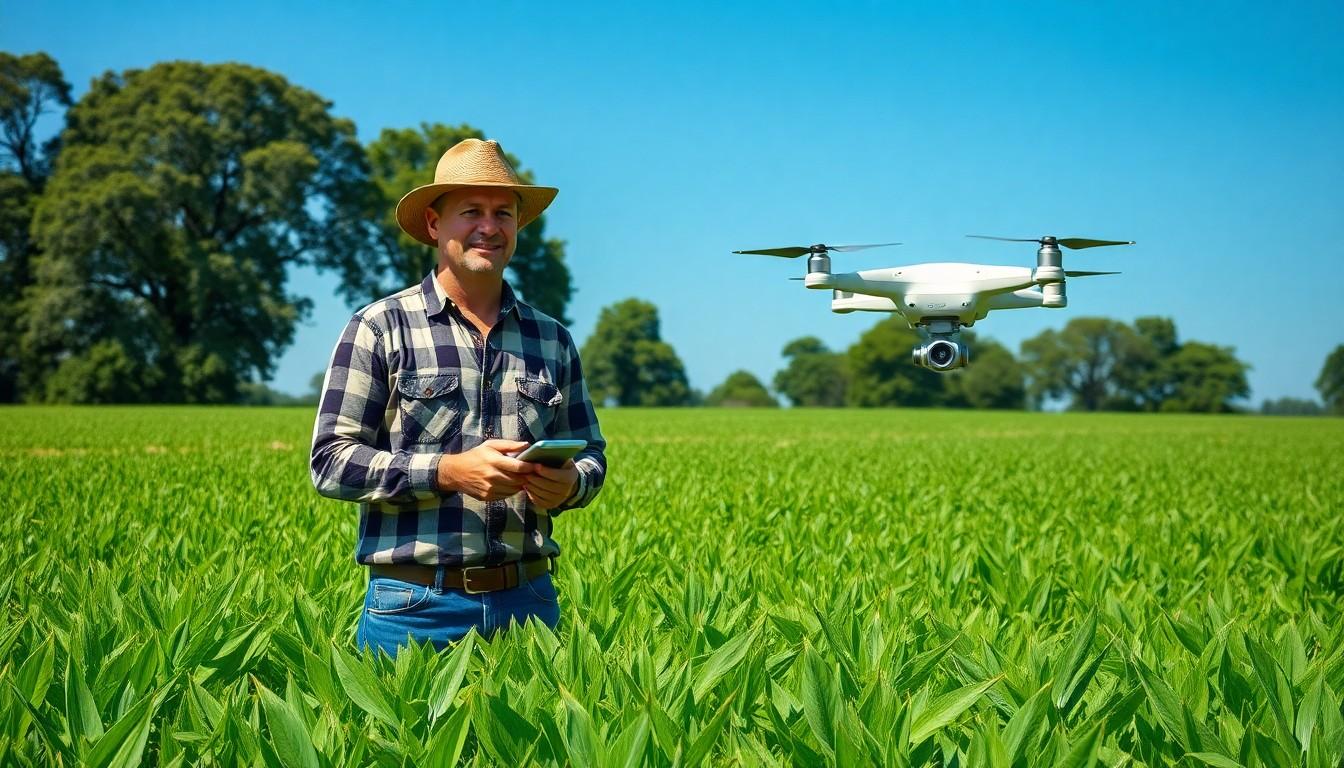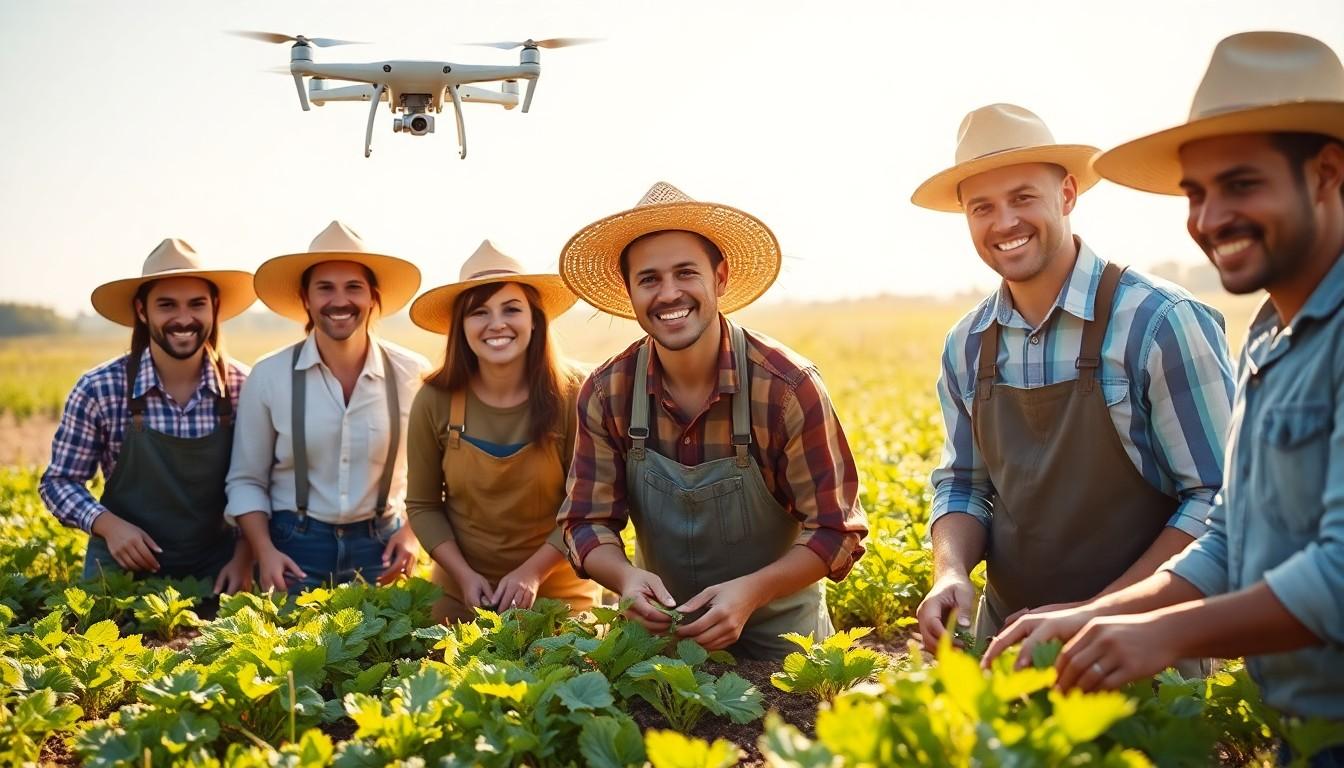As the world spins faster into the future, organic farming is stepping into the spotlight like a celebrity at a red carpet event. With its eco-friendly vibes and health benefits, it’s no wonder people are trading in their conventional crops for a more sustainable approach. Picture this: fields buzzing with life, crops thriving without synthetic pesticides, and farmers grinning ear to ear as they embrace a greener way to feed the planet.
But what does the future hold for this green revolution? With technology on their side, farmers are gearing up to innovate like never before. From drones monitoring crop health to apps that help with soil management, the future of organic farming promises to be as exciting as a rollercoaster ride—minus the stomach-churning drops. Get ready to explore how these trends could reshape agriculture and our plates in ways we never imagined.
Future of Organic Farming
Organic farming represents an agricultural approach that prioritizes sustainability and health. This practice eliminates synthetic pesticides and fertilizers, minimizing environmental harm. Farmers utilize natural methods, including crop rotation and composting, to enhance soil fertility and ecosystems.
The demand for organic produce continues to rise, fueled by consumer awareness regarding health benefits and ecological impacts. Organic farming benefits biodiversity, encouraging a balance of beneficial insects and plants. It contributes to healthier soil, water quality, and overall ecosystem resilience.
Innovations enhance organic farming, making it more accessible and efficient. Technologies like precision agriculture enable farmers to monitor and manage crops effectively. Data-driven solutions facilitate better decision-making, leading to improved yields.
Additionally, organic farmers often engage in community-supported agriculture (CSA), connecting directly with consumers. Such connections foster trust and transparency, promoting local food systems. Education plays a key role, with various programs teaching farmers about sustainable practices and organic certifications.
Market trends indicate significant growth in the organic sector. Projections show that organic food sales could reach over $100 billion in the U.S. by 2025. Increased investment in research and development supports these trends, driving innovation and improving practices.
Overall, organic farming signifies a shift toward a more sustainable agricultural model. Its future promises advancements that deepen the relationship between consumers and their food sources while preserving the environment for generations to come.
Current Trends in Organic Farming

Organic farming continues to evolve, shaped by various trends that enhance its sustainability and market presence. Technological advancements and consumer preferences significantly influence how this sector operates.
Technological Innovations
Precision agriculture is transforming organic farming practices, allowing farmers to use data-driven strategies for improved crop management. Drones facilitate aerial monitoring of fields, enabling efficient identification of crop health and soil conditions. Soil management apps provide insights on nutrient levels, empowering farmers to enhance soil fertility. Innovations in irrigation systems help optimize water usage, further supporting sustainable practices. These technologies collectively lead to higher yields while maintaining organic integrity.
Consumer Demand
Consumer interest in organic produce has skyrocketed, reflecting a growing awareness of health and environmental benefits. Food shoppers increasingly prefer products free from synthetic chemicals, creating a strong market for organic offerings. Research shows that organic food sales in the U.S. may surpass $100 billion by 2025, demonstrating a clear trend towards organic consumption. Local sourcing through community-supported agriculture enhances consumer connection, increasing demand for local organic products. Awareness campaigns continuously educate shoppers, further driving the shift towards organic products.
Challenges Facing Organic Farming
Organic farming faces several challenges that can impact its growth. Addressing these challenges is crucial for the sustainability of this agricultural practice.
Environmental Factors
Climate change poses significant risks to organic farming. Increased temperatures and erratic weather patterns can affect crop yields. Water availability also fluctuates, impacting irrigation practices. Soil health remains a concern, with organic fields often struggling against erosion and nutrient depletion. Biodiversity loss can reduce the effectiveness of pest control methods inherent in organic practices. Natural disasters like floods or droughts can devastate organic farms, disrupting local ecosystems. Lastly, invasive species threaten native crops, requiring organic farmers to adapt quickly.
Economic Barriers
Economic barriers hinder the expansion of organic farming. High initial investment costs discourage many farmers from transitioning to organic practices. Certification expenses can be significant, adding financial strain during the conversion period. Limited access to funding further complicates the financial landscape for prospective organic farmers. Market access can also pose challenges, with limited pathways to sell organic produce at competitive prices. Price fluctuations in organic markets contribute to economic instability, making long-term planning difficult. Consumer education remains essential, as not all shoppers fully understand the value of organic products, affecting demand.
The Role of Sustainability in Organic Farming
Sustainability forms the backbone of organic farming practices. This approach emphasizes natural methods such as crop rotation and composting to enhance soil health. The absence of synthetic pesticides not only benefits the environment but also supports farmer welfare and biodiversity. Organic farming fosters resilient ecosystems, promoting biodiversity that strengthens food systems.
Innovative techniques play a significant role in advancing sustainability. Precision agriculture technologies, like drones and soil management apps, enable farmers to monitor their crops effectively. Data-driven strategies improve yields while maintaining organic standards. With these advancements, organic farmers can make informed decisions that benefit both their crops and the environment.
Economic factors also influence the sustainability of organic farming. High initial investment costs and certification expenses can deter new farmers from transitioning to organic practices. Difficulty in accessing funding further complicates these challenges. Addressing these economic barriers is crucial for promoting the growth of organic farming systems.
Consumer awareness directly impacts sustainable organic practices. Shoppers increasingly seek out organic produce free from synthetic chemicals. Research indicates organic food sales in the U.S. may exceed $100 billion by 2025, reflecting a clear consumer shift towards organic offerings. Community-supported agriculture strengthens the connection between consumers and local farmers, further driving demand for organic products.
Educational initiatives play a vital role in enhancing consumer understanding. Not all consumers grasp the benefits of organic farming, making education essential in sustaining demand. Awareness campaigns inform shoppers about the environmental and health advantages of organic produce, nurturing a more sustainable food culture. All these elements combined create a robust framework for the future of organic farming.
Future Prospects for Organic Farming
Organic farming’s future appears promising, driven by policy changes and market dynamics.
Policy Developments
Government regulations increasingly support organic practices. Legislation aiming to expand funding for organic initiatives has gained momentum. Programs encouraging sustainable agricultural methods create an enabling environment for farmers. Moreover, subsidies for organic certification help mitigate initial investment costs. The U.S. Department of Agriculture continues to enhance resources for organic farmers, ensuring better access to technical assistance and training. With these developments, farmers can navigate certification processes with greater ease, fueling organic farming’s resilience against market challenges.
Market Growth Predictions
Market growth for organic products shows impressive potential. Research indicates organic food sales in the U.S. could exceed $100 billion by 2025. Consumer demand continues to climb, driven by a heightened awareness of health and environmental benefits. Local sourcing opportunities expand as community-supported agriculture gains traction. As supermarkets and retailers increase their organic offerings, access to organic products improves. Predictions suggest that ongoing consumer education campaigns will further bolster this upward trend, solidifying organic farming’s role in the future food landscape.
Viable Path Towards a Healthier Planet
The future of organic farming looks promising as it embraces technological advancements and a growing consumer base. Innovations in precision agriculture and community-supported agriculture are reshaping the landscape, making it easier for farmers to thrive while prioritizing sustainability.
As awareness of health and environmental benefits continues to grow, the demand for organic products is set to soar. Supportive policies and market dynamics will likely bolster this trend, paving the way for a more sustainable food system.
While challenges remain, the commitment to organic practices offers a viable path towards a healthier planet. The evolution of organic farming not only enhances food quality but also fosters a deeper connection between consumers and their food sources.

